Alice Springs Desert Park
ASDP BirdsAustralian Boobook Owl Australian Bustard Australian Hobby Banded Lapwing Barn Owl Black Kite Black-breasted Buzzard Black-faced Woodswallow Black-fronted Dotterel Bourke’s Parrot Brown Falcon Emu Inland Dotterel Orange Chat Pied Honeyeater Princess Parrot Rainbow Bee-eater Red-capped Robin Spinifex Pigeon Splendid Fairy-wren Tawny Frogmouth Wedge-tailed Eagle Western Bowerbird Whistling Kite White-faced Heron White-winged Fairywren
Alice Springs Desert ParkFauna Flora Nature Theatre Nocturnal House
The Princess Parrot (Polytelis alexandrae) is a highly nomad species that occurs across arid regions of Western Australia, Northern Territory and South Australia. Due to its elusive nature, and the regions that it is found, little is known about it and how vulnerable it is.

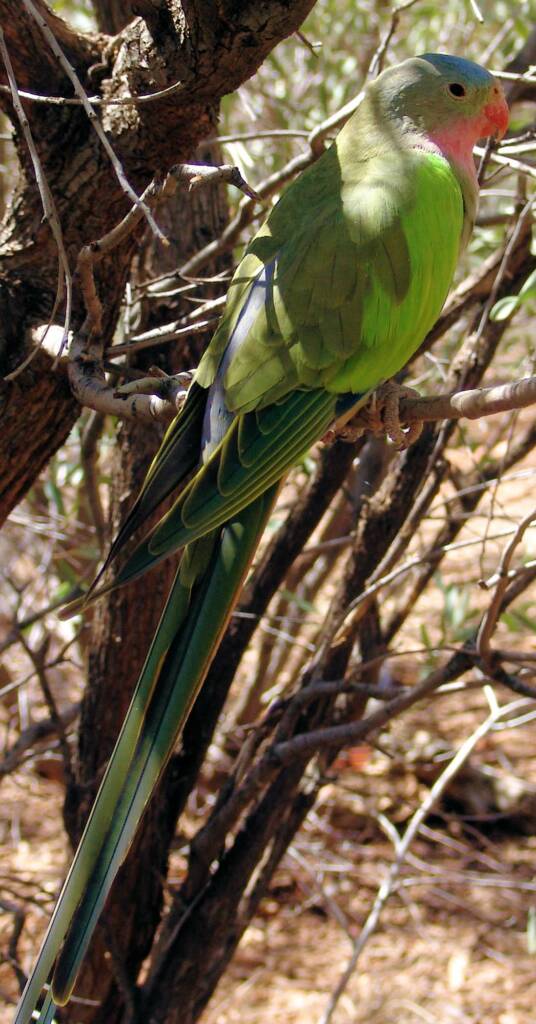
A medium size parrot, they are sexually dimorphic by colour. Whilst similar in colouration there are some difference. The male has a blue crown with blue-grey on the sides of the head, pink around the chin and throat. The body is an olive-green, with the top of the wings a bright green. The under wing is blue-violet. The crown of the female is a gray-mauve, whilst her wings are a duller green colour and her tail feathers are shorter than the male. The male bird has orange iris, whilst the female is browner. The male bird also has a coral-red beak, whilst the female beak is duller and has a greyish crown.
Another difference between the sexes is that the male bird has a longer, projecting extension from the end of the 3rd primary (flight) feather on each wing. This projection is known as a ‘spatula’ or ‘spatule’, appearing in mature male birds.
The juvenile birds are a duller colour to their mothers. This changes around eight to nine months old, at which point the colour differences between the male and female bird start to appear.
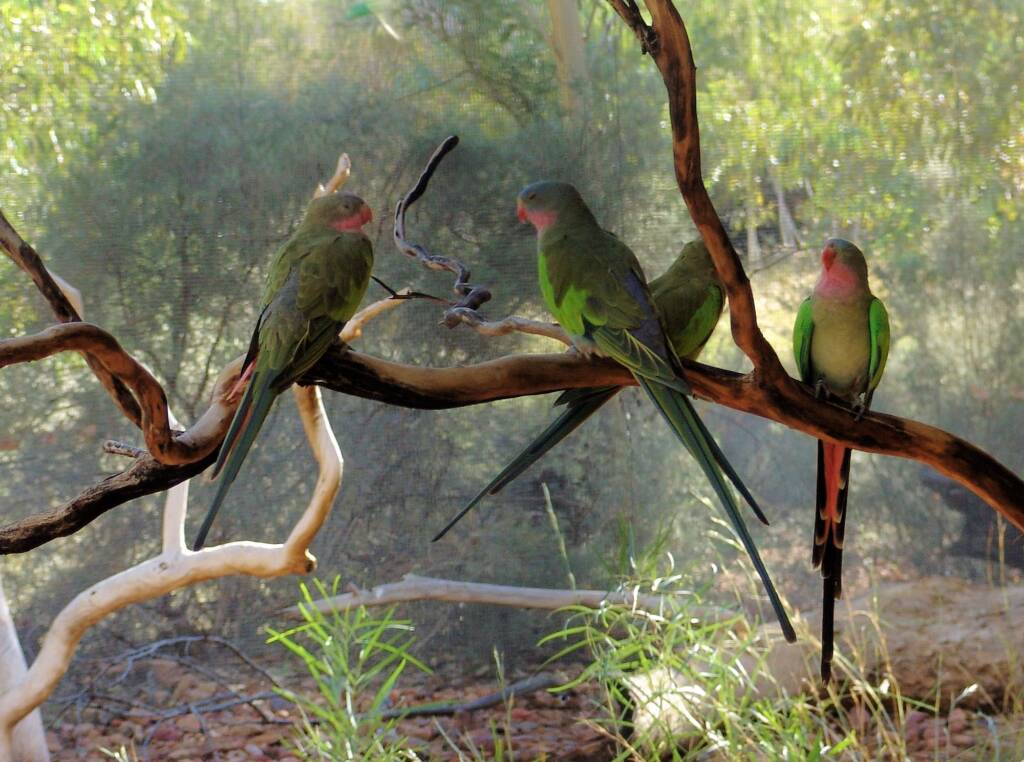
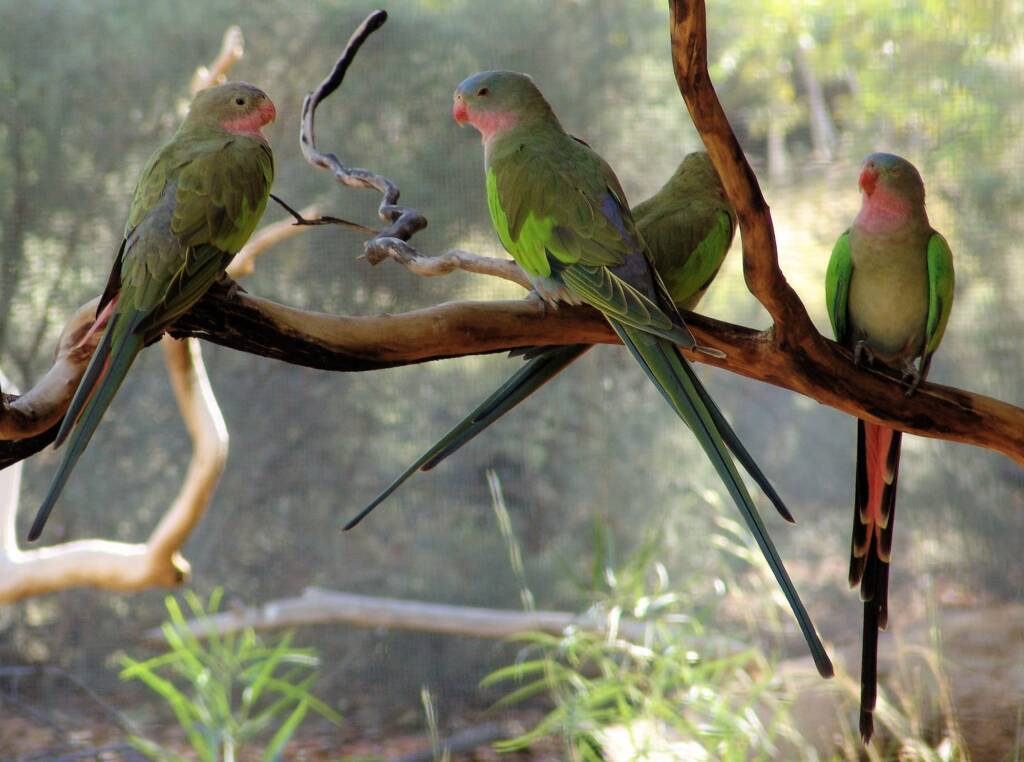
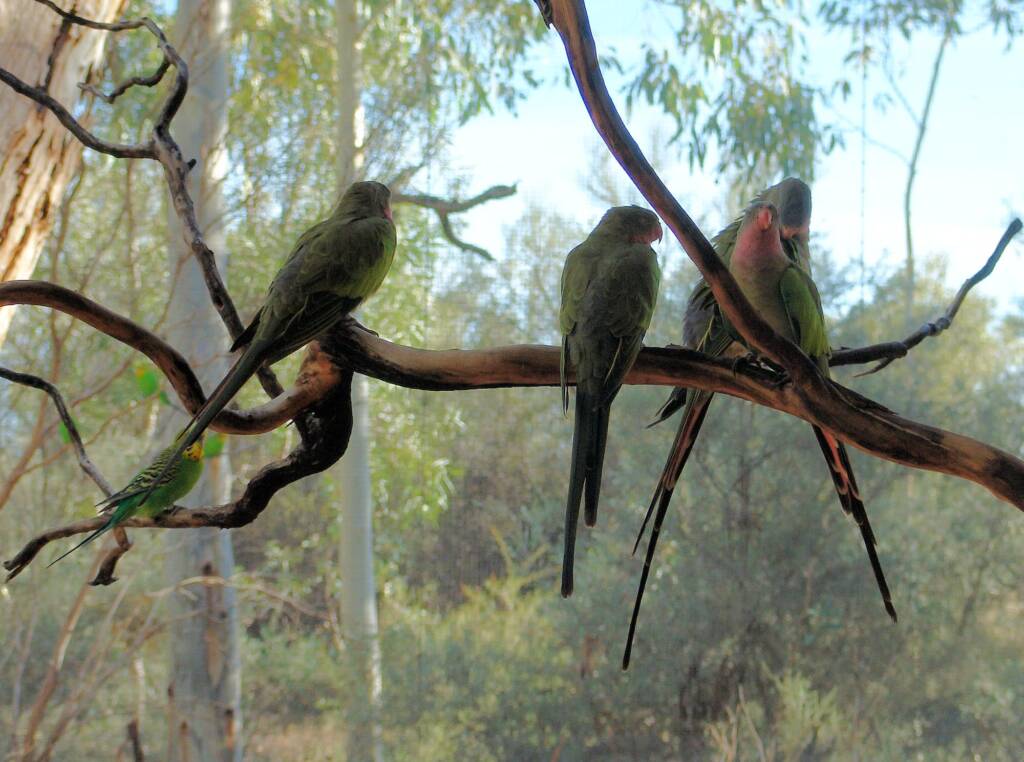
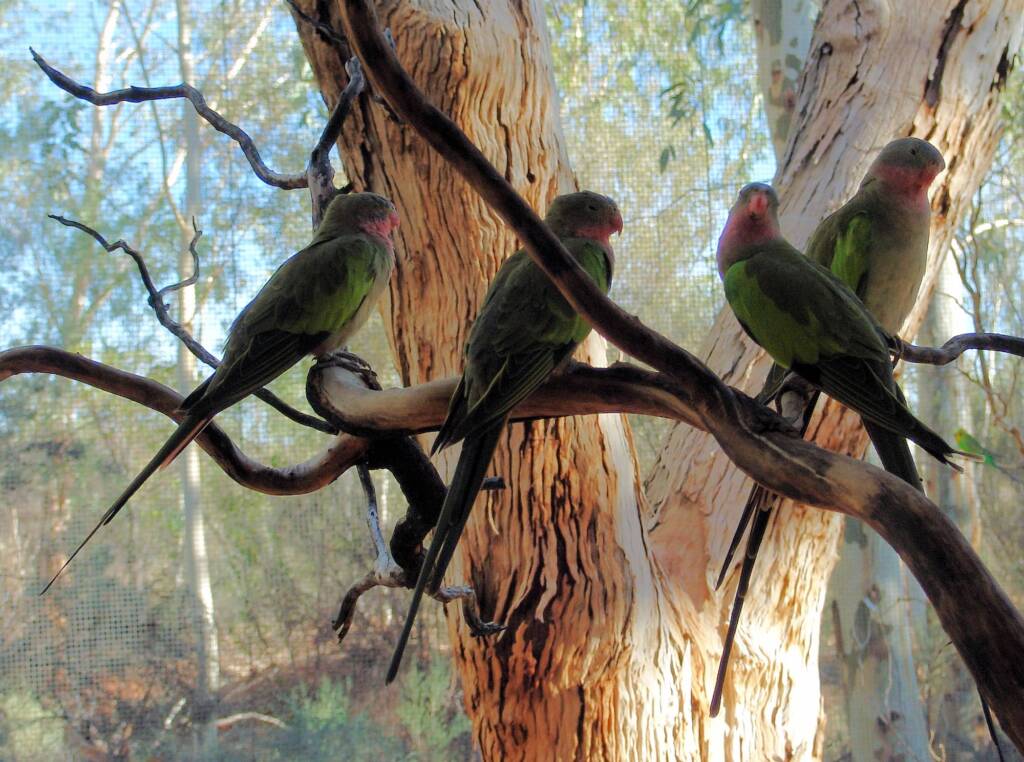
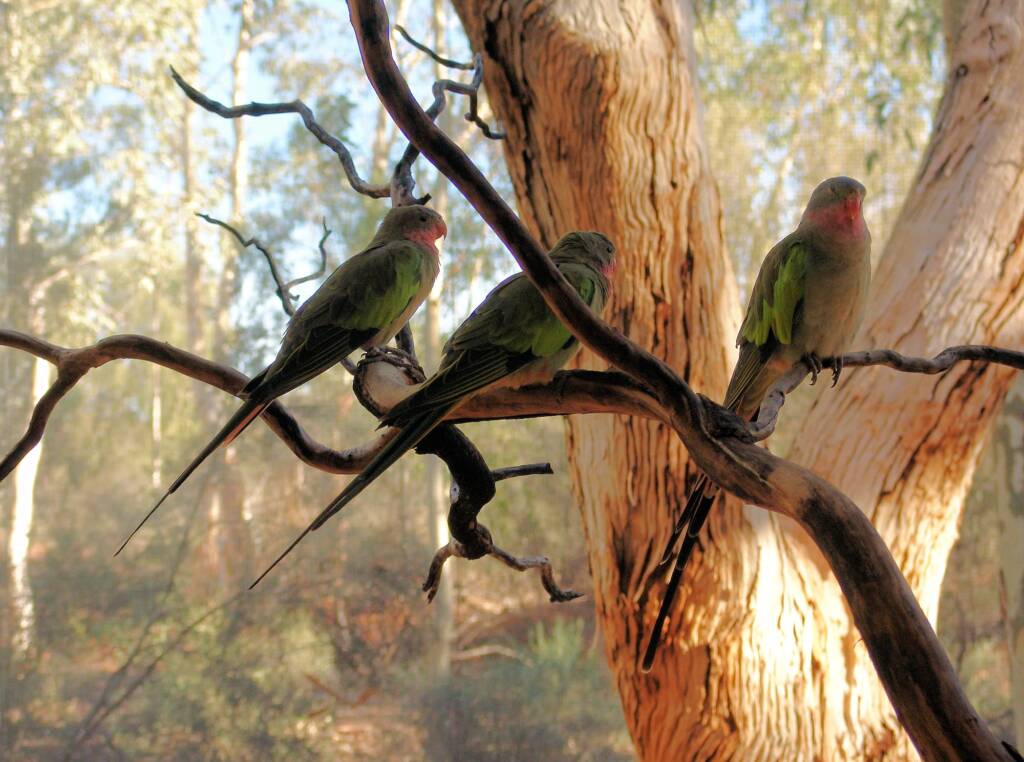
Common name
The Princess Parrot is named in honour of Princess Alexandra of Denmark, who in 1863 married the Prince of Wales Edward VII and eventually became Queen of the United Kingdom. Other names the species is known by include Queen Alexandra Parrot, Alexandra’s Parrot, Princess of Wales Parakeet, Rose-throated Parakeet, Spinifex Parrot.
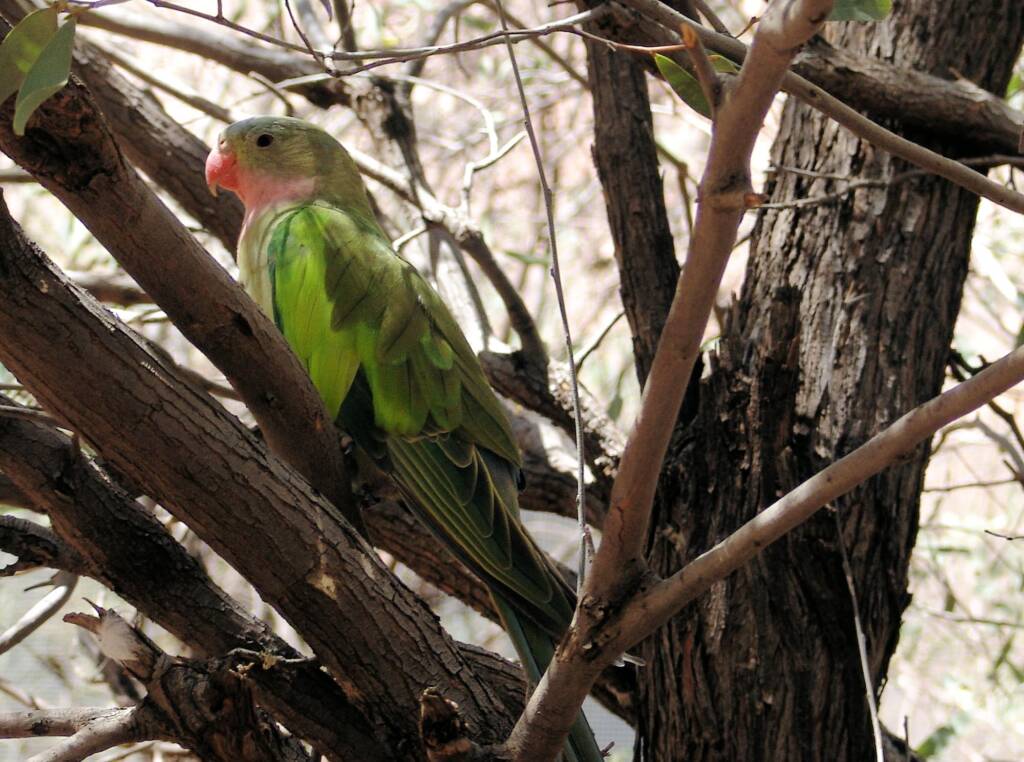
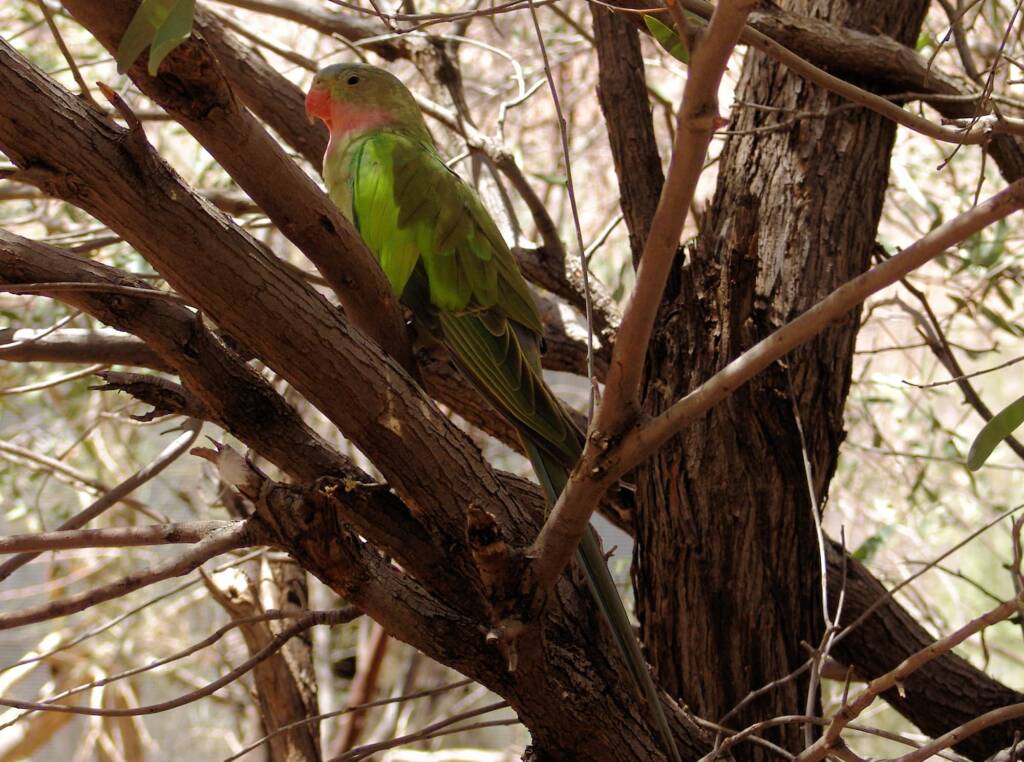
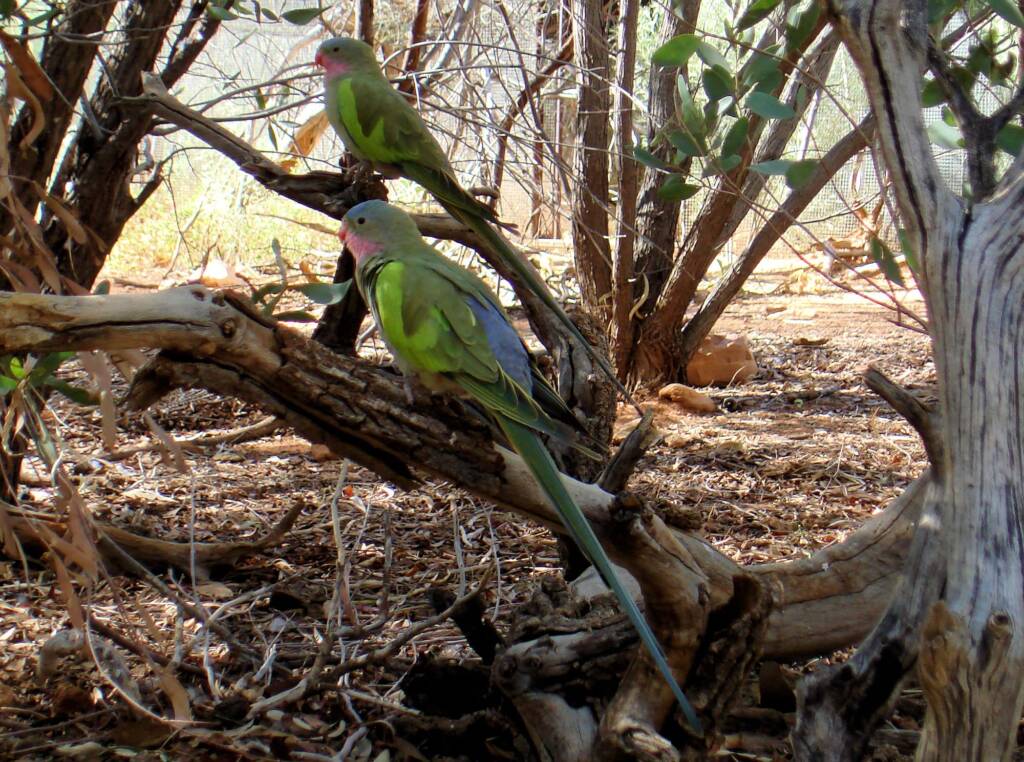
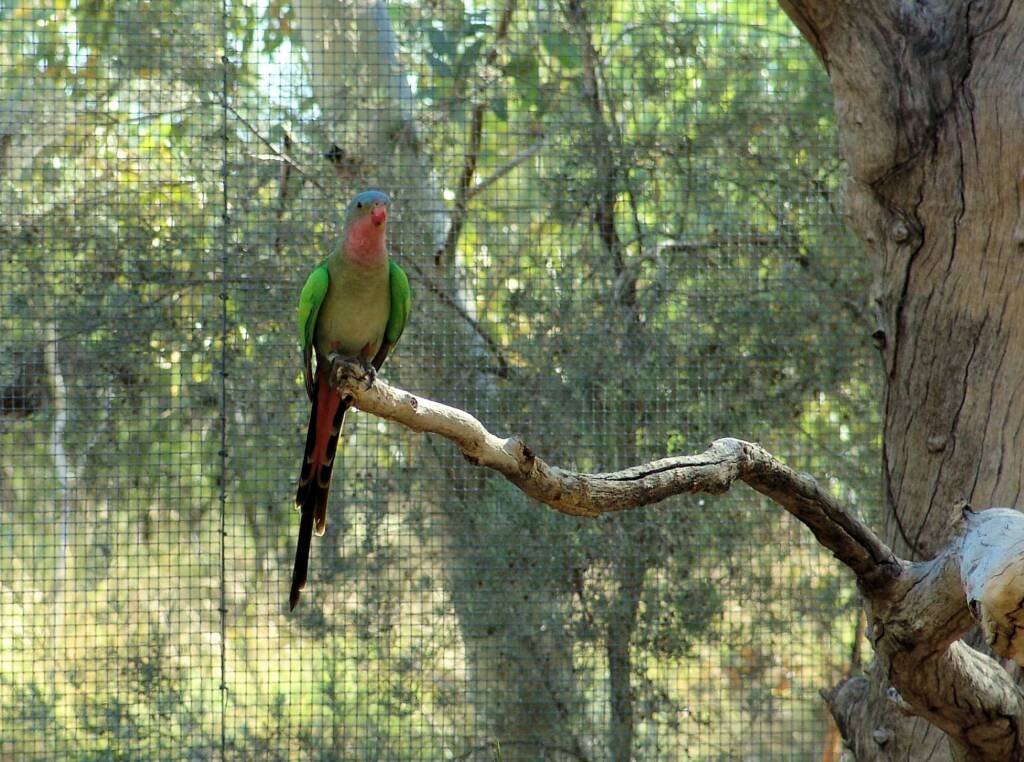
Images © Ausemade PL
- Scientific classification
- Kingdom: Animalia
- Phylum: Chordata
- Class: Aves
- Order: Psittaciformes
- Family: Psittaculidae
- Genus: Polytelis
- Species: Polytelis alexandrae
Footnote & References
- Princess Parrot, BirdLife Australia, https://www.birdlife.org.au/projects/woodland-birds-for-biodiversity/princess-parrot
- Princess parrot, https://en.wikipedia.org/wiki/Princess_parrot (last visited Aug. 21, 2021).
ASDP BirdsAustralian Boobook Owl Australian Bustard Australian Hobby Banded Lapwing Barn Owl Black Kite Black-breasted Buzzard Black-faced Woodswallow Black-fronted Dotterel Bourke’s Parrot Brown Falcon Emu Inland Dotterel Orange Chat Pied Honeyeater Princess Parrot Rainbow Bee-eater Red-capped Robin Spinifex Pigeon Splendid Fairy-wren Tawny Frogmouth Wedge-tailed Eagle Western Bowerbird Whistling Kite White-faced Heron White-winged Fairywren
ASDP FaunaASDP Arachnida ASDP Birds ASDP Insects ASDP Reptiles Dingo Ghost Bat Greater Bilby Numbat Red Kangaroo Short-beaked Echidna Spinifex Hopping Mouse Thorny Devil Western Quoll
Alice Springs Desert ParkFauna Flora Nature Theatre Nocturnal House
